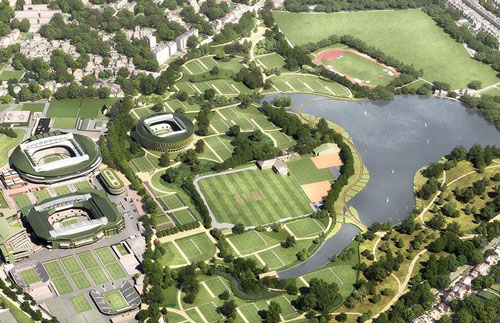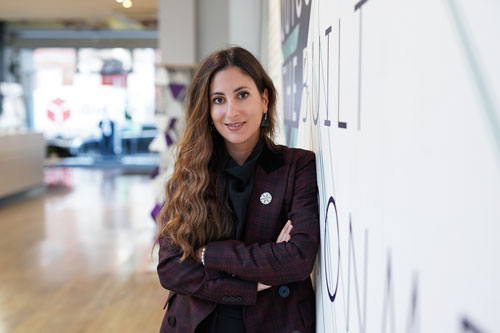Circular lighting approach to the expansion of Wimbledon tennis

A circular economy approach is being taken to a major exterior lighting project at the All England Lawn Tennis Club.
The organisation is expanding its estate in Wimbledon, south west London following the purchase of the Wimbledon Park Golf Club across the road.
Ongoing work on the site that hosts the iconic tennis tournament includes sensitive lighting decisions across the exterior areas of the park.
Ensuring ecological habitats are enhanced and kept undisturbed while restoring some of the original design values of this Capability Brown heritage landscape is at the heart of the client’s objectives.
Even though the site is planned to accommodate large crowds during championship periods, on a year-to-year basis the use of the parkland will be shared between private training grounds and a publicly accessible park for the local community.
‘The operational needs and activity levels vary significantly,’ says Alexia Gkika, senior lighting designer at Buro Happold, pictured below. ‘This called for a scalable and flexible exterior lighting scheme to achieve resource efficiency and support the project’s net zero plans.
 ‘An early discussion with the client team took place on the desired extent of light and the importance of darkness to meet a fine balance among operational, ecological, heritage and sustainability considerations.
‘An early discussion with the client team took place on the desired extent of light and the importance of darkness to meet a fine balance among operational, ecological, heritage and sustainability considerations.
‘The agreed approach was to provide illumination only on selected paths, with varying intensities depending on the time of the year. Our conversations surrounded the idea of: where do we need light and how much light do we need?
‘Not only were there decisions about what and where to light, decisions were also made to choose materials to contribute to a circular economy.
‘For the products chosen, we made sure that they are not emitting light upwards and that they are as circular as possible,’ said Gkika.
‘They are either modular, which makes them easily maintained, with replaceable, exchangeable components, or they are made by recycled or recyclable materials, with no virgin materials.
‘We prioritise products from the local supply chain as this has a direct effect on the embodied carbon content of the lighting equipment during manufacturing, use and end of life phases.
‘Our lighting proposals for Wimbledon Park Project have been designed using sustainability and circular economy objectives at their core.’
• Picture courtesy AELTC.
• Read Alexia Gkika’s article on Sustainable Lighting and the Circular Economy HERE.
• Recolight offers special one-day training workshops on ‘Lighting product design for a Circular Economy’. Hosted by industrial designer Simon Fisher of F Mark, the CPD-accredited event explores the design criteria, regulations and standards to help lighting manufacturers apply and demonstrate circular economy principles in product development. More HERE.


